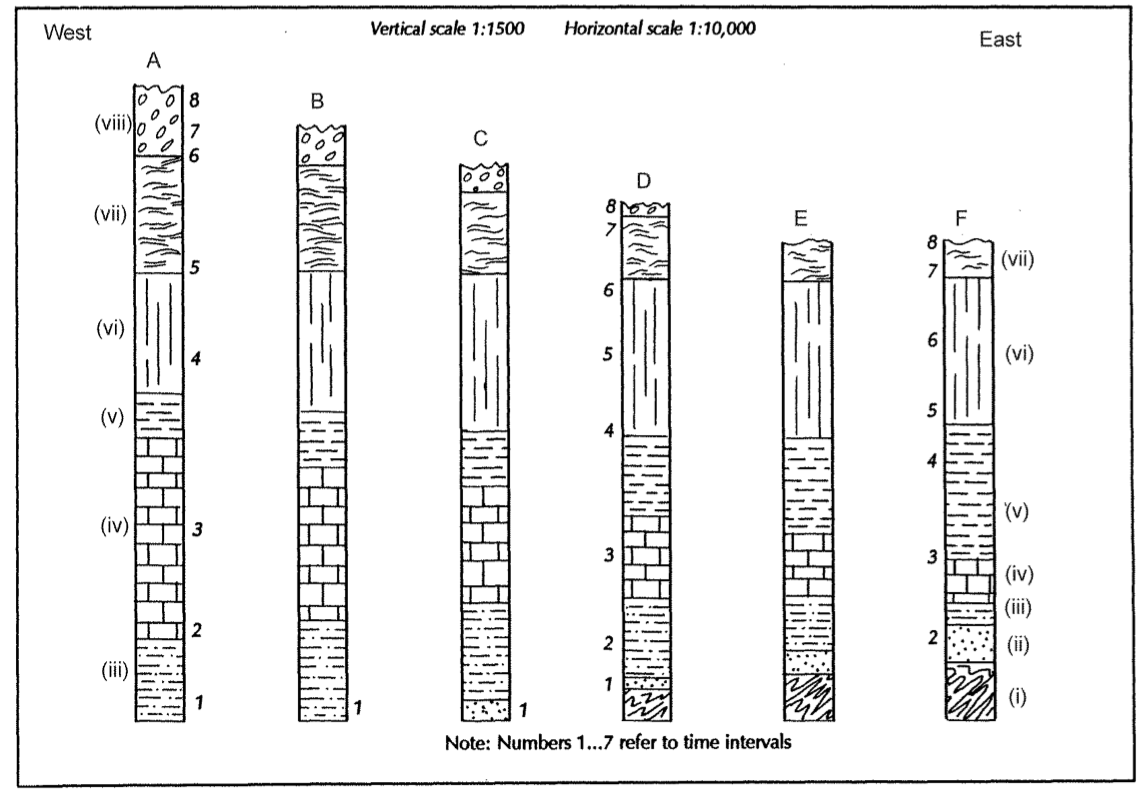Exercise 4.2. Intermediate Correlation Exercise
What To Do
1. Refer to the printer-friendly worksheets you downloaded (available at the beginning of Lab 4). You can also click here to download Figure 4.10 as a PNG file for editing with drawing software.
2. Draw lithologic correlation lines to connect equivalent rock units (shown using Roman numerals) in Figure 4.10.
3. Using a different colour, draw lines connecting equivalent time-stratigraphic units. The numbers beside the rock units correspond to time intervals.
4. Answer the questions that follow Figure 4.10.

Questions
a. Identify the depositional environment of the following facies descriptions. Transcribe these environments onto Figure 4.10.
i. The bedrock is granite gneiss.
ii. Mature white quartz sandstone with crossbeds and Skolithos trace fossils.
iii. Tan coloured shale and siltstone, some hummocky beds and Cruziana traces.
iv. Light grey biomicrite with thinly laminated and hummocky beds.
v. Black, thinly laminated shale with Zoophycus traces.
vi. Dark grey shale and sandstone showing graded beds, and sole marks in cyclic bedding.
vii. Greenish siltstones at base becoming tan medium sans with metre-scale crossbeds, rare shells.
viii. Reddish brown, clast supported conglomerate interbedded with Crossbedded brown, immature coarse sandstone and mud-cracked siltstone.
b. What is happening to relative sea level between time intervals 1 and 4?
c. In which direction was the source for the sediment that forms unit (ii)?
d. Where would the deepest part of the sedimentary basin have been at time 1? Where would the shoreline have been?
e. Where is the deepest part of the basin (the lowest elevation) at time 4?
f. What was happening to relative sea level between time intervals 4 and 8?
g. Where was the shoreline at time 7? How did you come to this conclusion?
h. What does the appearance of (viii) directly on top of (vii) tell you about the sedimentary history of this region?
i. Could this whole sedimentary sequence be created by global sea level rise and fall only? What other processes could have occurred?
